Guides •
Last updated on Aug 10, 2023
The Hero's Journey: 12 Steps to a Classic Story Structure
About the author
Reedsy's editorial team is a diverse group of industry experts devoted to helping authors write and publish beautiful books.
More about the Reedsy Editorial Team →Dario Villirilli
Editor-in-Chief of the Reedsy blog, Dario is a graduate of Mälardalen University. As a freelance writer, he has written for many esteemed outlets aimed at writers. A traveler at heart, he can be found roaming the world and working from his laptop.
View profile →The Hero's Journey is a story structure which follows a hero on their journey of growth and change. Typically, this adventure will have the hero starting out in their ordinary world, until they're forced out of their comfort zone to face challenges, gain insights, and return home transformed. From Theseus and the Minotaur to The Lion King, so many narratives follow this pattern that it’s become ingrained into our cultural DNA.
In this post, we'll show you how to make this classic plot structure work for you — and if you’re pressed for time, download our cheat sheet below for everything you need to know.
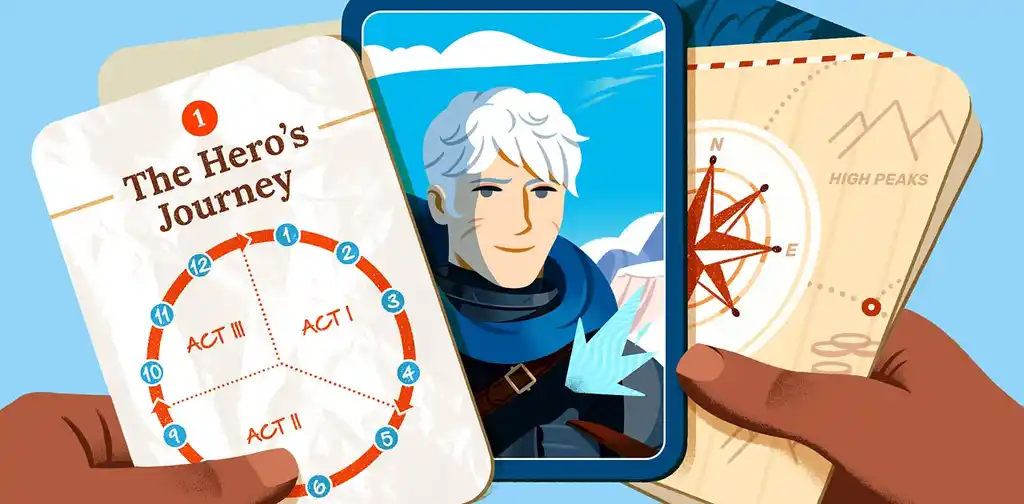
FREE RESOURCE
Hero's Journey Template
Plot your character's journey with our step-by-step template.
What is the Hero’s Journey?
The Hero's Journey, also known as the monomyth, is a story structure where a hero goes on a quest or adventure to achieve a goal, and has to overcome obstacles and fears, before ultimately returning home transformed.
This narrative arc has been present in various forms across cultures for centuries, if not longer, but gained popularity through Joseph Campbell's mythology book, The Hero with a Thousand Faces. While Campbell identified 17 story beats in his monomyth definition, this post will concentrate on a 12-step framework popularized in 2007 by screenwriter Christopher Vogler in his book The Writer’s Journey.
The 12 Steps of the Hero’s Journey
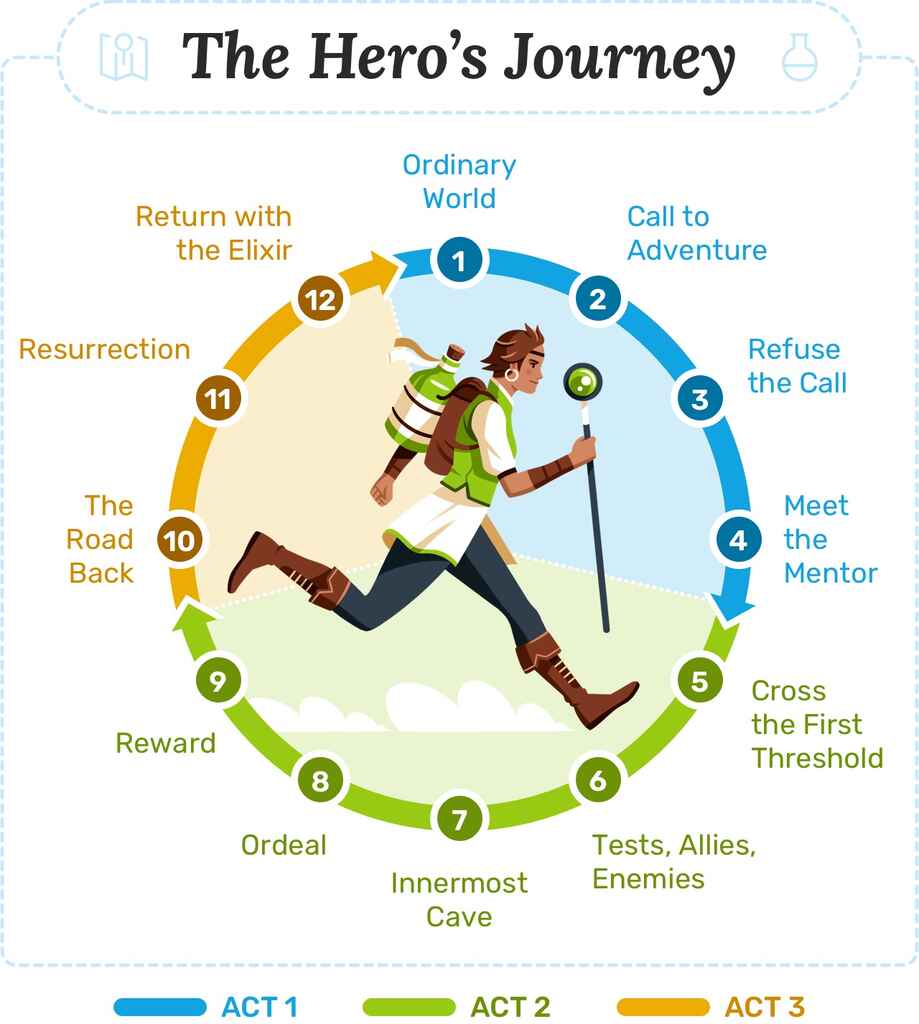
The Hero's Journey is a model for both plot points and character arc development: as the Hero traverses the world, they'll undergo inner and outer transformation at each stage of the journey. The 12 steps of the hero's journey are:
- The Ordinary World: We meet our hero.
- Call to Adventure: Will they meet the challenge?
- Refusal of the Call: They resist the adventure.
- Meeting the Mentor: A teacher arrives.
- Crossing the First Threshold: The hero leaves their comfort zone.
- Tests, Allies, Enemies: Making friends and facing roadblocks.
- Approach to the Inmost Cave: Getting closer to our goal.
- Ordeal: The hero’s biggest test yet!
- Reward (Seizing the Sword): Light at the end of the tunnel
- The Road Back: We aren’t safe yet.
- Resurrection: The final hurdle is reached.
- Return with the Elixir: The hero heads home, triumphant.
Believe it or not, this story structure also applies across mediums and genres. Let's dive into it!
1. Ordinary World
In which we meet our Hero.
The journey has yet to start. Before our Hero discovers a strange new world, we must first understand the status quo: their ordinary, mundane reality.
It’s up to this opening leg to set the stage, introducing the Hero to readers. Importantly, it lets readers identify with the Hero as a “normal” person in a “normal” setting, before the journey begins.
2. Call to Adventure
In which an adventure starts.
The call to adventure is all about booting the Hero out of their comfort zone. In this stage, they are generally confronted with a problem or challenge they can't ignore. This catalyst can take many forms, as Campbell points out in Hero with a Thousand Faces. The Hero can, for instance:
- Decide to go forth of their own volition;
- Theseus upon arriving in Athens.
- Be sent abroad by a benign or malignant agent;
- Odysseus setting off on his ship in The Odyssey.
- Stumble upon the adventure as a result of a mere blunder;
- Dorothy when she’s swept up in a tornado in The Wizard of Oz.
- Be casually strolling when some passing phenomenon catches the wandering eye and lures one away from the frequented paths of man.
- Elliot in E.T. upon discovering a lost alien in the tool shed.
The stakes of the adventure and the Hero's goals become clear. The only question: will he rise to the challenge?
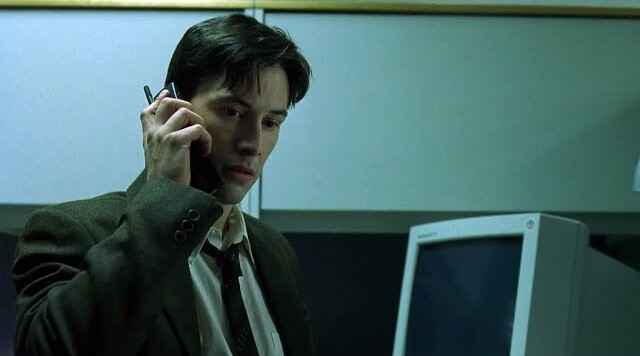
3. Refusal of the Call
In which the Hero digs in their feet.
Great, so the Hero’s received their summons. Now they’re all set to be whisked off to defeat evil, right?
Not so fast. The Hero might first refuse the call to action. It’s risky and there are perils — like spiders, trolls, or perhaps a creepy uncle waiting back at Pride Rock. It’s enough to give anyone pause.
In Star Wars, for instance, Luke Skywalker initially refuses to join Obi-Wan on his mission to rescue the princess. It’s only when he discovers that his aunt and uncle have been killed by stormtroopers that he changes his mind.
Hire a book coach to guide your own journey
Francesca R.
Available to hire
Eagle-eyed editor (copy and developmental) with a passion for health and social care publishing, legal content and the humanities.
Sara J.
Available to hire
Developmental editor, formerly at Penguin Random House, Harper Collins and Bloomsbury, and published author.
Jennifer M.
Available to hire
Big dreams + ideas, those are the books for me! I specialize in historical, romance, fantasy, and contemporary novels + nonfiction history.
4. Meeting the Mentor
In which the Hero acquires a personal trainer.
The Hero's decided to go on the adventure — but they’re not ready to spread their wings yet. They're much too inexperienced at this point and we don't want them to do a fabulous belly-flop off the cliff.
Enter the mentor: someone who helps the Hero, so that they don't make a total fool of themselves (or get themselves killed). The mentor provides practical training, profound wisdom, a kick up the posterior, or something abstract like grit and self-confidence.
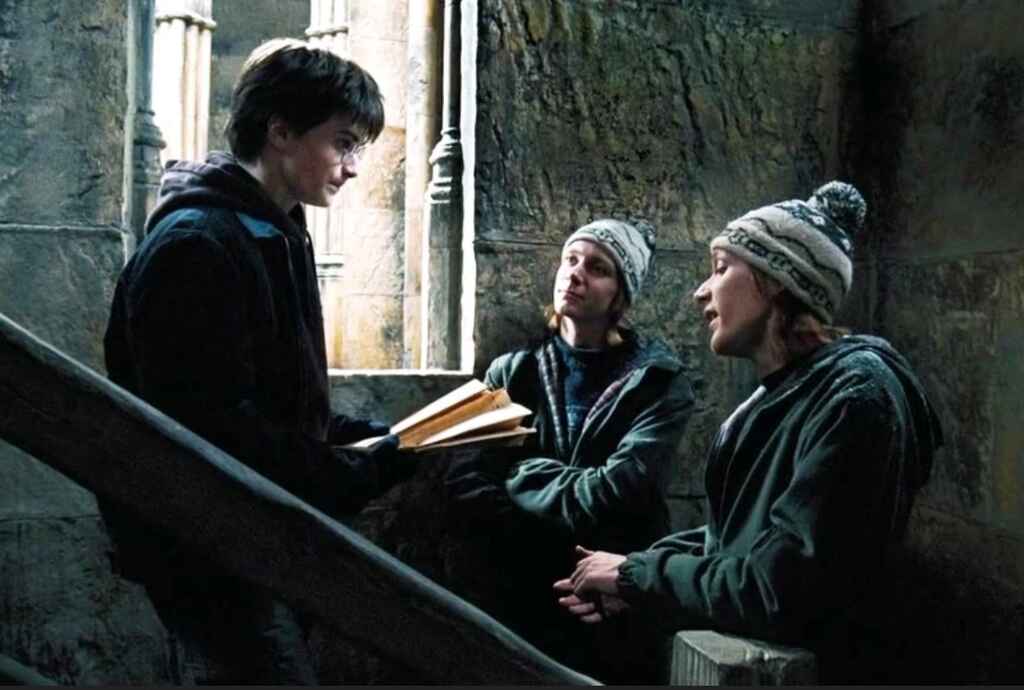
Wise old wizards seem to like being mentors. But mentors take many forms, from witches to hermits and suburban karate instructors. They might literally give weapons to prepare for the trials ahead, like Q in the James Bond series. Or perhaps the mentor is an object, such as a map. In all cases, they prepare the Hero for the next step.
5. Crossing the First Threshold
In which the Hero enters the other world in earnest.
Now the Hero is ready — and committed — to the journey. This marks the end of the Departure stage and is when the adventure really kicks into the next gear. As Vogler writes: “This is the moment that the balloon goes up, the ship sails, the romance begins, the wagon gets rolling.”
From this point on, there’s no turning back.
Like our Hero, you should think of this stage as a checkpoint for your story. Pause and re-assess your bearings before you continue into unfamiliar territory. Have you:
- Launched the central conflict? If not, here’s a post on types of conflict to help you out.
- Established the theme of your book? If not, check out this post that’s all about creating theme and motifs.
- Made headway into your character development? If not, this author-approved template may be useful:
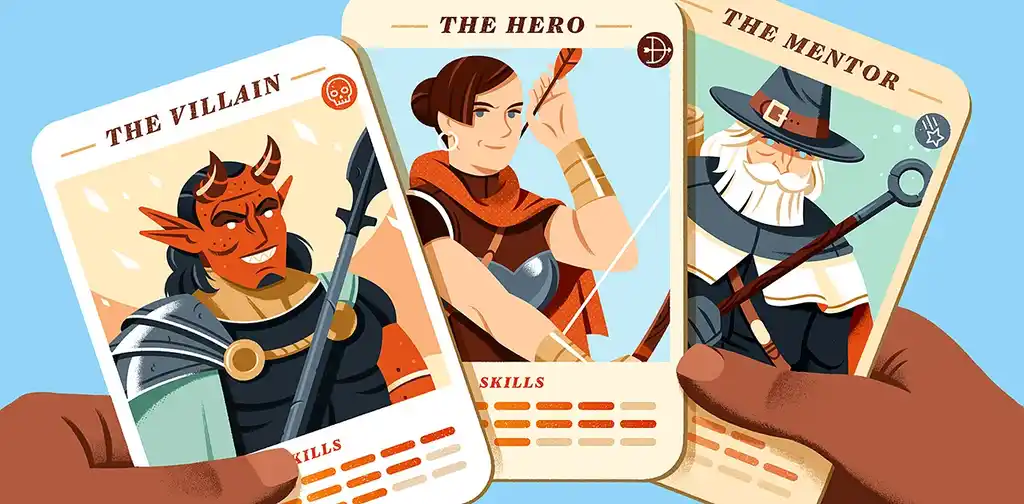
FREE RESOURCE
Reedsy’s Character Profile Template
A story is only as strong as its characters. Fill this out to develop yours.
6. Tests, Allies, Enemies
In which the Hero faces new challenges and gets a squad.
When we step into the Special World, we notice a definite shift. The Hero might be discombobulated by this unfamiliar reality and its new rules. This is generally one of the longest stages in the story, as our protagonist gets to grips with this new world.
This makes a prime hunting ground for the series of tests to pass! Luckily, there are many ways for the Hero to get into trouble:
- In Jumanji: Welcome to the Jungle, Spencer, Bethany, “Fridge,” and Martha get off to a bad start when they bump into a herd of bloodthirsty hippos.
- In his first few months at Hogwarts, Harry Potter manages to fight a troll, almost fall from a broomstick and die, and get horribly lost in the Forbidden Forest.
- Marlin and Dory encounter three “reformed” sharks, get shocked by jellyfish, and are swallowed by a blue whale en route to finding Nemo.
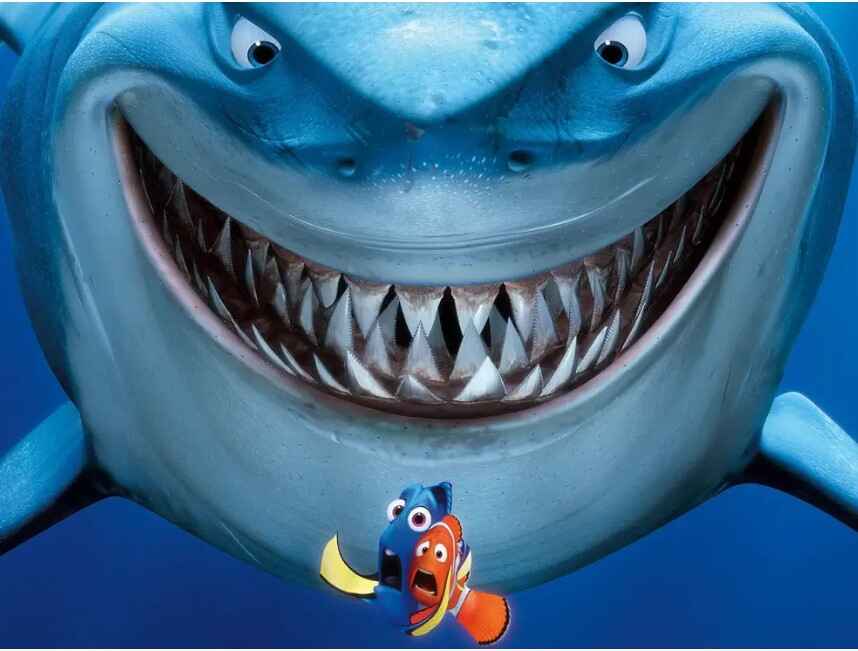
This stage often expands the cast of characters. Once the protagonist is in the Special World, he will meet allies and enemies — or foes that turn out to be friends and vice versa. He will learn a new set of rules from them. Saloons and seedy bars are popular places for these transactions, as Vogler points out (so long as the Hero survives them).
7. Approach to the Inmost Cave
In which the Hero gets closer to his goal.
This isn’t a physical cave. Instead, the “inmost cave” refers to the most dangerous spot in the other realm — whether that’s the villain’s chambers, the lair of the fearsome dragon, or the Death Star. Almost always, it is where the ultimate goal of the quest is located.
Note that the protagonist hasn’t entered the Inmost Cave just yet. This stage is all about the approach to it. It covers all the prep work that's needed in order to defeat the villain.
8. Ordeal
In which the Hero faces his biggest test of all thus far.
Of all the tests the Hero has faced, none have made them hit rock bottom — until now. Vogler describes this phase as a “black moment.” Campbell refers to it as the “belly of the whale.” Both indicate some grim news for the Hero.
The protagonist must now confront their greatest fear. If they survive it, they will emerge transformed. This is a critical moment in the story, as Vogler explains that it will “inform every decision that the Hero makes from this point forward.”
The Ordeal is sometimes not the climax of the story. There’s more to come. But you can think of it as the main event of the second act — the one in which the Hero actually earns the title of “Hero.”
9. Reward (Seizing the Sword)
In which the Hero sees light at the end of the tunnel.
Our Hero’s been through a lot. However, the fruits of their labor are now at hand — if they can just reach out and grab them! The “reward” is the object or knowledge the Hero has fought throughout the entire journey to hold.
Once the protagonist has it in their possession, it generally has greater ramifications for the story. Vogler offers a few examples of it in action:
- Luke rescues Princess Leia and captures the plans of the Death Star — keys to defeating Darth Vader.
- Dorothy escapes from the Wicked Witch’s castle with the broomstick and the ruby slippers — keys to getting back home.
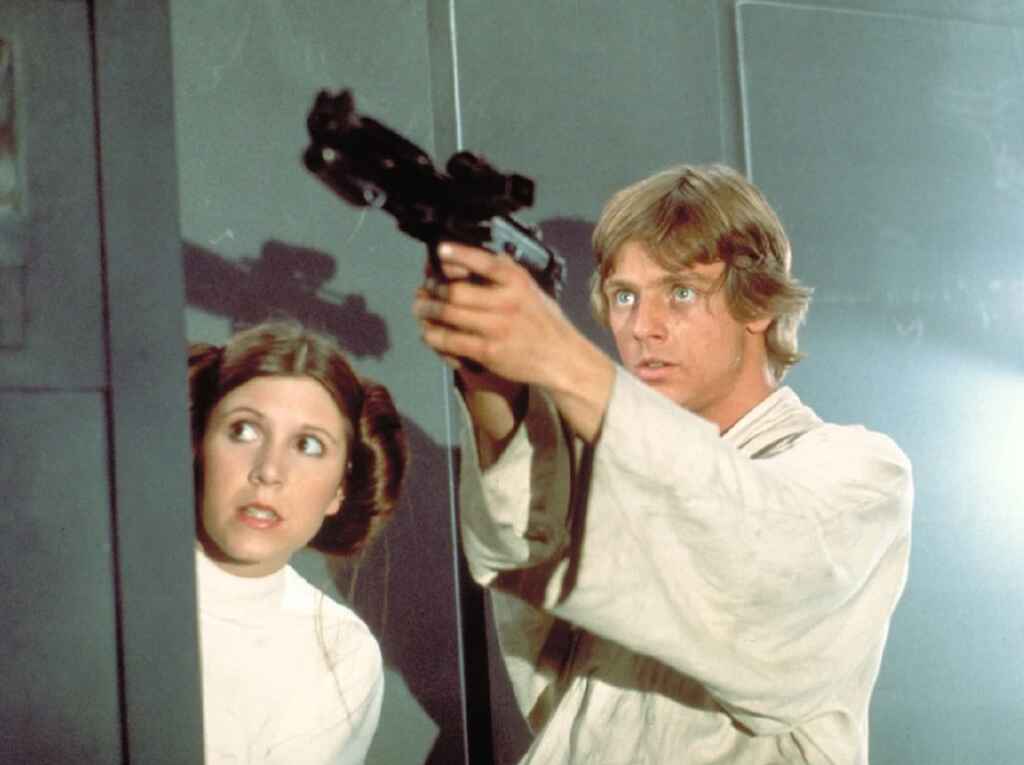
10. The Road Back
In which the light at the end of the tunnel might be a little further than the Hero thought.
The story's not over just yet, as this phase marks the beginning of Act Three. Now that he's seized the reward, the Hero tries to return to the Ordinary World, but more dangers (inconveniently) arise on the road back from the Inmost Cave.
More precisely, the Hero must deal with the consequences and aftermath of the previous act: the dragon, enraged by the Hero who’s just stolen a treasure from under his nose, starts the hunt. Or perhaps the opposing army gathers to pursue the Hero across a crowded battlefield. All further obstacles for the Hero, who must face them down before they can return home.
11. Resurrection
In which the last test is met.
Here is the true climax of the story. Everything that happened prior to this stage culminates in a crowning test for the Hero, as the Dark Side gets one last chance to triumph over the Hero.
Vogler refers to this as a “final exam” for the Hero — they must be “tested once more to see if they have really learned the lessons of the Ordeal.” It’s in this Final Battle that the protagonist goes through one more “resurrection.” As a result, this is where you’ll get most of your miraculous near-death escapes, à la James Bond's dashing deliverances. If the Hero survives, they can start looking forward to a sweet ending.
12. Return with the Elixir
In which our Hero has a triumphant homecoming.
Finally, the Hero gets to return home. However, they go back a different person than when they started out: they’ve grown and matured as a result of the journey they’ve taken.
But we’ve got to see them bring home the bacon, right? That’s why the protagonist must return with the “Elixir,” or the prize won during the journey, whether that’s an object or knowledge and insight gained.
Of course, it’s possible for a story to end on an Elixir-less note — but then the Hero would be doomed to repeat the entire adventure.
Examples of The Hero’s Journey in Action
To better understand this story template beyond the typical sword-and-sorcery genre, let's analyze three examples, from both screenplay and literature, and examine how they implement each of the twelve steps.
Rocky
The 1976 film Rocky is acclaimed as one of the most iconic sports films because of Stallone’s performance and the heroic journey his character embarks on.
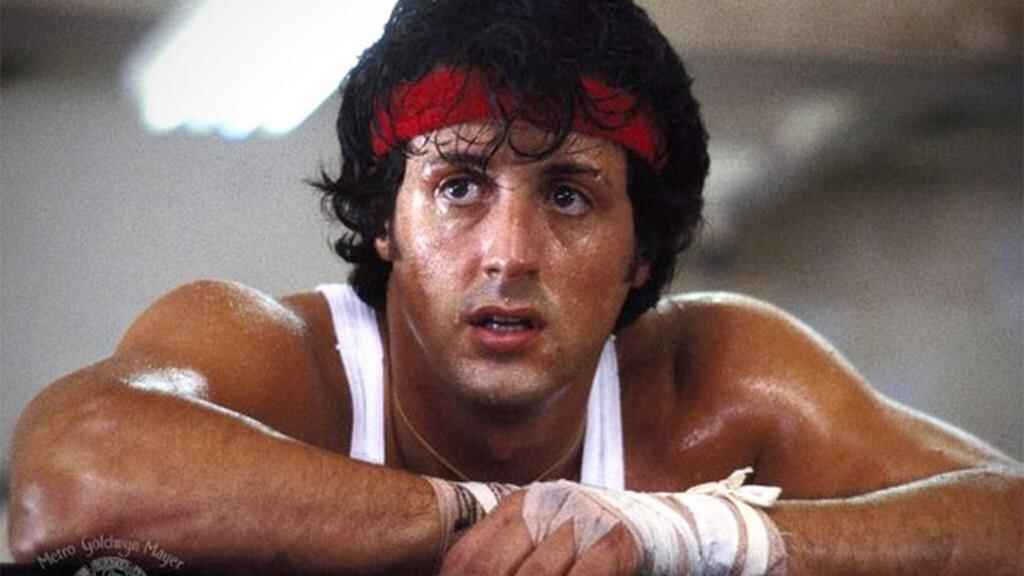
- Ordinary World. Rocky Balboa is a mediocre boxer and loan collector — just doing his best to live day-to-day in a poor part of Philadelphia.
- Call to Adventure. Heavyweight champ Apollo Creed decides to make a big fight interesting by giving a no-name loser a chance to challenge him. That loser: Rocky Balboa.
- Refusal of the Call. Rocky says, “Thanks, but no thanks,” given that he has no trainer and is incredibly out of shape.
- Meeting the Mentor. In steps former boxer Mickey “Mighty Mick” Goldmill, who sees potential in Rocky and starts training him physically and mentally for the fight.
- Crossing the First Threshold. Rocky crosses the threshold of no return when he accepts the fight on live TV, and 一 in parallel 一 when he crosses the threshold into his love interest Adrian’s house and asks her out on a date.
- Tests, Allies, Enemies. Rocky continues to try and win Adrian over and maintains a dubious friendship with her brother, Paulie, who provides him with raw meat to train with.
- Approach to the Inmost Cave. The Inmost Cave in Rocky is Rocky’s own mind. He fears that he’ll never amount to anything — something that he reveals when he butts heads with his trainer, Mickey, in his apartment.
- Ordeal. The start of the training montage marks the beginning of Rocky’s Ordeal. He pushes through it until he glimpses hope ahead while running up the museum steps.
- Reward (Seizing the Sword). Rocky's reward is the restoration of his self-belief, as he recognizes he can try to “go the distance” with Apollo Creed and prove he's more than "just another bum from the neighborhood."
- The Road Back. On New Year's Day, the fight takes place. Rocky capitalizes on Creed's overconfidence to start strong, yet Apollo makes a comeback, resulting in a balanced match.
- Resurrection. The fight inflicts multiple injuries and pushes both men to the brink of exhaustion, with Rocky being knocked down numerous times. But he consistently rises to his feet, enduring through 15 grueling rounds.
- Return with the Elixir. Rocky loses the fight — but it doesn’t matter. He’s won back his confidence and he’s got Adrian, who tells him that she loves him.
Moving outside of the ring, let’s see how this story structure holds on a completely different planet and with a character in complete isolation.
The Martian
In Andy Weir’s bestselling novel (better known for its big screen adaptation) we follow astronaut Mark Watney as he endures the challenges of surviving on Mars and working out a way to get back home.
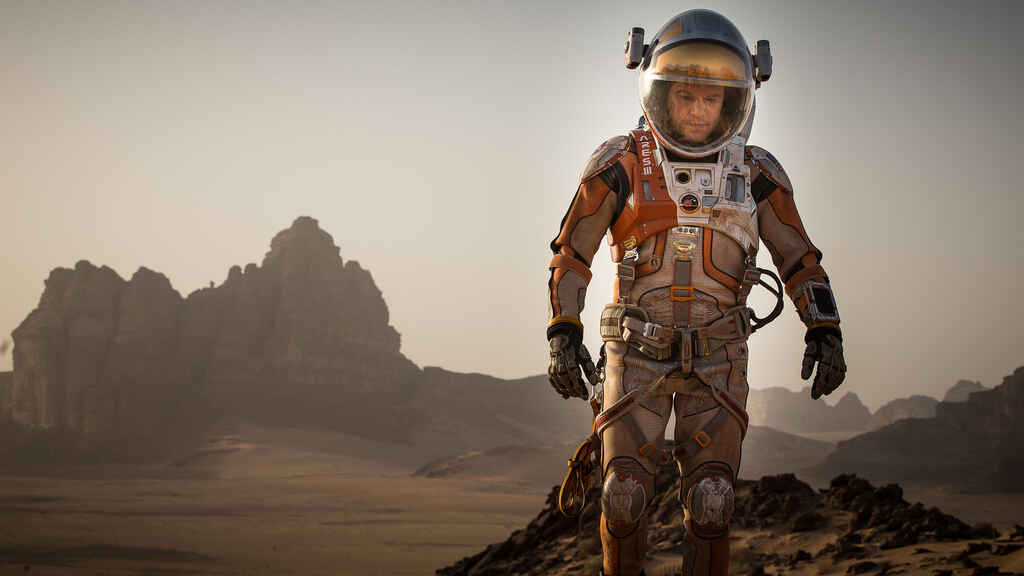
- The Ordinary World. Botanist Mark and other astronauts are on a mission on Mars to study the planet and gather samples. They live harmoniously in a structure known as "the Hab.”
- Call to Adventure. The mission is scrapped due to a violent dust storm. As they rush to launch, Mark is flung out of sight and the team believes him to be dead. He is, however, very much alive — stranded on Mars with no way of communicating with anyone back home.
- Refusal of the Call. With limited supplies and grim odds of survival, Mark concludes that he will likely perish on the desolate planet.
- Meeting the Mentor. Thanks to his resourcefulness and scientific knowledge he starts to figure out how to survive until the next Mars mission arrives.
- Crossing the First Threshold. Mark crosses the mental threshold of even trying to survive 一 he successfully creates a greenhouse to cultivate a potato crop, creating a food supply that will last long enough.
- Tests, Allies, Enemies. Loneliness and other difficulties test his spirit, pushing him to establish contact with Earth and the people at NASA, who devise a plan to help.
- Approach to the Inmost Cave. Mark faces starvation once again after an explosion destroys his potato crop.
- Ordeal. A NASA rocket destined to deliver supplies to Mark disintegrates after liftoff and all hope seems lost.
- Reward (Seizing the Sword). Mark’s efforts to survive are rewarded with a new possibility to leave the planet. His team 一 now aware that he’s alive 一 defies orders from NASA and heads back to Mars to rescue their comrade.
- The Road Back. Executing the new plan is immensely difficult 一 Mark has to travel far to locate the spaceship for his escape, and almost dies along the way.
- Resurrection. Mark is unable to get close enough to his teammates' ship but finds a way to propel himself in empty space towards them, and gets aboard safely.
- Return with the Elixir. Now a survival instructor for aspiring astronauts, Mark teaches students that space is indifferent and that survival hinges on solving one problem after another, as well as the importance of other people’s help.
Coming back to Earth, let’s now examine a heroine’s journey through the wilderness of the Pacific Crest Trail and her… humanity.
Wild
The memoir Wild narrates the three-month-long hiking adventure of Cheryl Strayed across the Pacific coast, as she grapples with her turbulent past and rediscovers her inner strength.
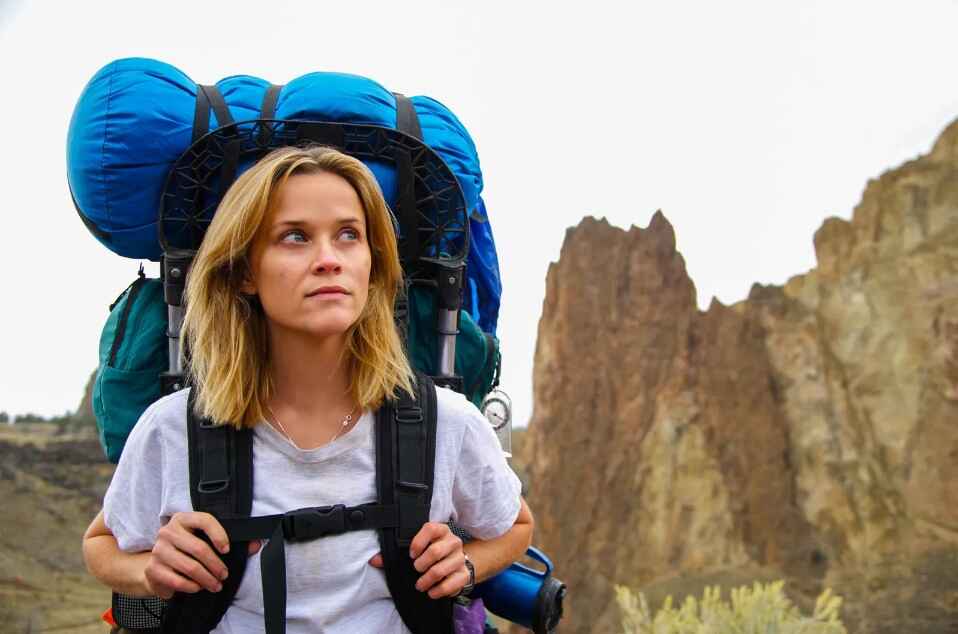
- The Ordinary World. Cheryl shares her strong bond with her mother who was her strength during a tough childhood with an abusive father.
- Call to Adventure. As her mother succumbs to lung cancer, Cheryl faces the heart-wrenching reality to confront life's challenges on her own.
- Refusal of the Call. Cheryl spirals down into a destructive path of substance abuse and infidelity, which leads to hit rock bottom with a divorce and unwanted pregnancy.
- Meeting the Mentor. Her best friend Lisa supports her during her darkest time. One day she notices the Pacific Trail guidebook, which gives her hope to find her way back to her inner strength.
- Crossing the First Threshold. She quits her job, sells her belongings, and visits her mother’s grave before traveling to Mojave, where the trek begins.
- Tests, Allies, Enemies. Cheryl is tested by her heavy bag, blisters, rattlesnakes, and exhaustion, but many strangers help her along the trail with a warm meal or hiking tips.
- Approach to the Inmost Cave. As Cheryl goes through particularly tough and snowy parts of the trail her emotional baggage starts to catch up with her.
- Ordeal. She inadvertently drops one of her shoes off a cliff, and the incident unearths the helplessness she's been evading since her mother's passing.
- Reward (Seizing the Sword). Cheryl soldiers on, trekking an impressive 50 miles in duct-taped sandals before finally securing a new pair of shoes. This small victory amplifies her self-confidence.
- The Road Back. On the last stretch, she battles thirst, sketchy hunters, and a storm, but more importantly, she revisits her most poignant and painful memories.
- Resurrection. Cheryl forgives herself for damaging her marriage and her sense of worth, owning up to her mistakes. A pivotal moment happens at Crater Lake, where she lets go of her frustration at her mother for passing away.
- Return with the Elixir. Cheryl reaches the Bridge of the Gods and completes the trail. She has found her inner strength and determination for life's next steps.
There are countless other stories that could align with this template, but it's not always the perfect fit. So, let's look into when authors should consider it or not.
When should writers use The Hero’s Journey?
The Hero’s Journey is just one way to outline a novel and dissect a plot. For more longstanding theories on the topic, you can go here to read about the ever-popular Three-Act Structure, here to discover Dan Harmon's Story Circle, and here to learn about three more prevalent structures.
So when is it best to use the Hero’s Journey? There are a couple of circumstances which might make this a good choice.
When you need more specific story guidance than simple structures can offer
Simply put, the Hero’s Journey structure is far more detailed and closely defined than other story structure theories. If you want a fairly specific framework for your work than a thee-act structure, the Hero’s Journey can be a great place to start.
Of course, rules are made to be broken. There’s plenty of room to play within the confines of the Hero’s Journey, despite it appearing fairly prescriptive at first glance. Do you want to experiment with an abbreviated “Resurrection” stage, as J.K. Rowling did in Harry Potter and the Sorcerer’s Stone? Are you more interested in exploring the journey of an anti-hero? It’s all possible.
Once you understand the basics of this universal story structure, you can use and bend it in ways that disrupt reader expectations.
Need more help developing your book? Try this template on for size:
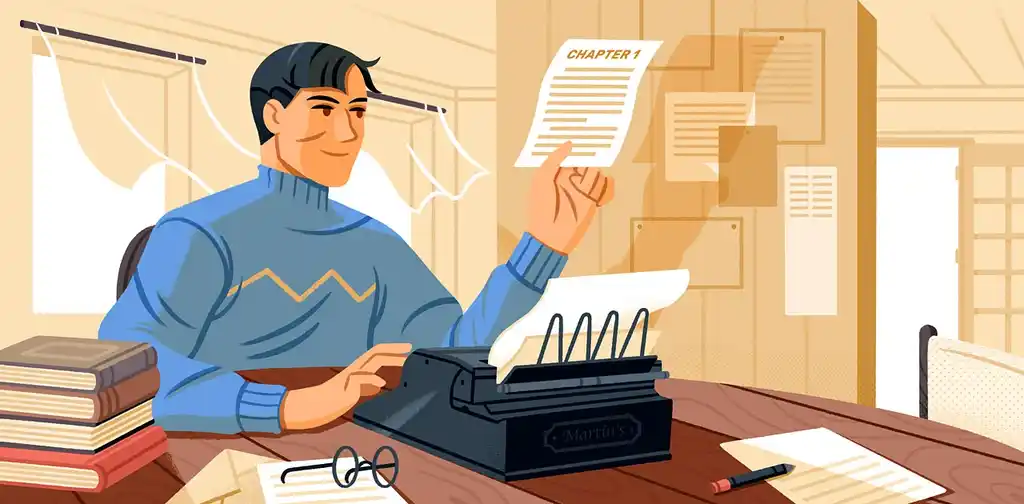
FREE RESOURCE
Get our Book Development Template
Use this template to go from a vague idea to a solid plan for a first draft.
When your focus is on a single protagonist
No matter how sprawling or epic the world you’re writing is, if your story is, at its core, focused on a single character’s journey, then this is a good story structure for you. It’s kind of in the name! If you’re dealing with an entire ensemble, the Hero’s Journey may not give you the scope to explore all of your characters’ plots and subplot — a broader three-act structure may give you more freedom to weave a greater number story threads.
✍️
Which story structure is right for you?
Take this quiz and we'll match your story to a structure in minutes!
Whether you're a reader or writer, we hope our guide has helped you understand this universal story arc. Want to know more about story structure? We explain 6 more in our guide — read on!
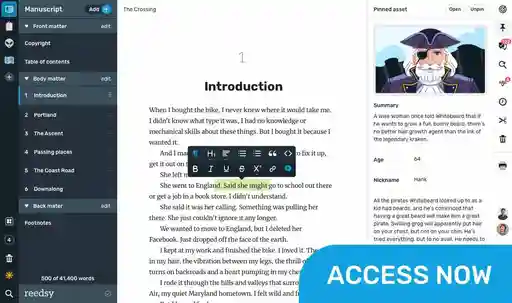


6 responses
PJ Reece says:
25/07/2018 – 19:41
Nice vid, good intro to story structure. Typically, though, the 'hero's journey' misses the all-important point of the Act II crisis. There, where the hero faces his/her/its existential crisis, they must DIE. The old character is largely destroyed -- which is the absolute pre-condition to 'waking up' to what must be done. It's not more clever thinking; it's not thinking at all. Its SEEING. So many writing texts miss this point. It's tantamount to a religions experience, and nobody grows up without it. STORY STRUCTURE TO DIE FOR examines this dramatic necessity.
↪️ C.T. Cheek replied:
13/11/2019 – 21:01
Okay, but wouldn't the Act II crisis find itself in the Ordeal? The Hero is tested and arguably looses his/her/its past-self for the new one. Typically, the Hero is not fully "reborn" until the Resurrection, in which they defeat the hypothetical dragon and overcome the conflict of the story. It's kind of this process of rebirth beginning in the earlier sections of the Hero's Journey and ending in the Resurrection and affirmed in the Return with the Elixir.
Lexi Mize says:
25/07/2018 – 22:33
Great article. Odd how one can take nearly every story and somewhat plug it into such a pattern.
Bailey Koch says:
11/06/2019 – 02:16
This was totally lit fam!!!!
↪️ Bailey Koch replied:
11/09/2019 – 03:46
where is my dad?
Frank says:
12/04/2020 – 12:40
Great article, thanks! :) But Vogler didn't expand Campbell's theory. Campbell had seventeen stages, not twelve.